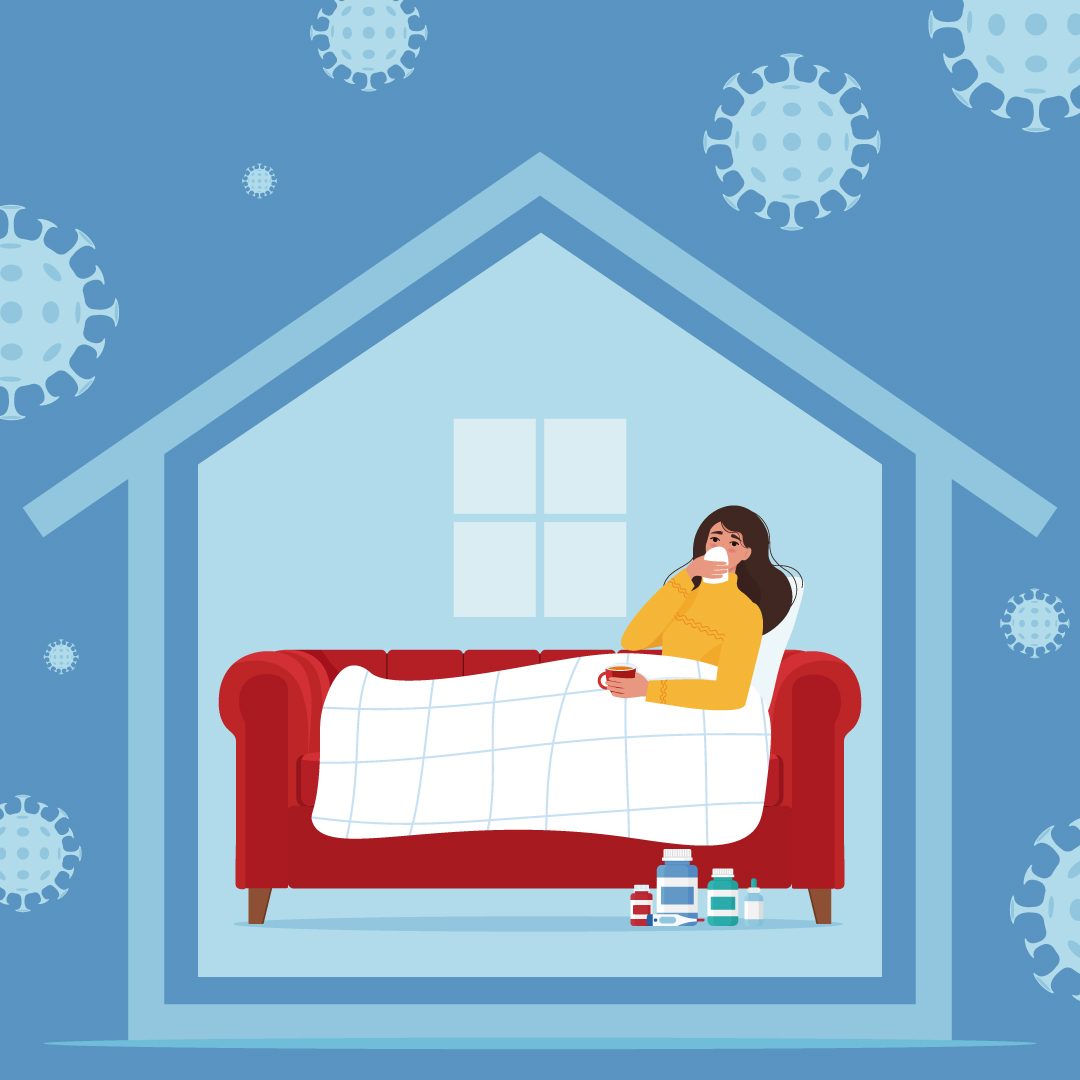SUMMARY
This is AI generated summarization, which may have errors. For context, always refer to the full article.

After an unprecedented surge in COVID-19 cases in the Philippines, which saw daily tallies reaching over 20,000 several times, the Department of Health (DOH) said in mid-October that it was observing a decrease in positive cases and hospital admissions.
The country also continues to roll out its vaccination campaign, and has begun vaccinating children with underlying medical conditions.
Still, the risks remain. Emerging variants like Delta have shown that the virus’ infectiousness can get stronger, and can induce symptoms that weren’t even known from the first SARS-COV-2 virus we knew in early 2020.
If you’re at home and start experiencing COVID-19 symptoms, what should you do? Below is a list of steps to take to ensure your safety and the safety of those you live with.
This list is based on information from the Department of Health (DOH), the World Health Organization (WHO), and the experiences of five households whose members underwent home quarantine and were interviewed by Rappler.
Isolate immediately
At the first sign of illness, isolate yourself from the rest of your household. You will need a separate room and bathroom from them.
The following are best practices for isolating at home:
- Practice one-meter physical distancing.
- Wear a face mask. Those caring for you or interacting with you must also wear a face mask.
- Sanitize your hands every time you interact with others.
- Eat right and take prescribed medicine.
- Disinfect your things properly, and wash your hands before and after you use these items.
- Cover your mouth and nose using tissue when you cough or sneeze, and wash your hands afterwards.
- Do not let others use your personal belongings, such as towels, bed sheets, plates, and utensils.
It’s also useful to have the following at home for tracking your symptoms:
- Thermometer
- Oximeter
Get tested
Do not wait for your symptoms to worsen before getting tested. Test other members of the household as well, particularly those you have been in close contact with. (LIST: COVID-19 teleconsultation lines, home testing services)
Your Barangay Health Emergency Response Team (BHERT) or your local government unit (LGU) may be able to help you with testing or possible transfer to a health facility.
The RT-PCR (reverse transcription polymerase chain reaction) test is the gold standard in detecting the presence of the virus. However, in some areas where RT-PCR tests are lacking, health workers may use a rapid antigen test.
Prepare for possible facility quarantine
Pack your bags in case you need to undergo facility quarantine. Here are some things you should bring:
- Change of clothes
- Toiletries
- Utensils and a water jug
- Medicine – both regular medications that you take and medications for COVID-19 symptom relief
Inform close contacts you’ve tested positive
Inform recent close contacts that you tested positive. These include anyone who you were within six feet of for a combined total of 15 minutes over a 24-hour period. A person can transmit the virus that causes COVID-19 48 hours before they exhibit symptoms or before their positive specimen collection date.
Familiarize yourself with LGU protocols
Your BHERT or LGU will need to be updated on your situation for contact tracing. If you live in a condominium, the building management may also have its own protocol or coordination with the LGU.
Stock up on supplies
Coordinate with family members, friends, neighbors, or building staff on groceries or food deliveries. They can leave things outside your door in order to minimize contact.
Manage, monitor symptoms
Daily self-monitoring sheets – like this checklist from DOH – Eastern Visayas – are available online and will come in handy when your local health center asks for updates throughout or after your quarantine period.
The DOH advises the following for treating a fever at home:
- Check temperature every four hours. You may drink paracetamol every four hours if your temperature reaches above 37.5 degrees Celsius.
- Take a bath daily if you can and if possible.
- Ensure good ventilation and airflow in your room.
- Do not wear more layers of clothes.
- Drink a lot of water, fresh fruit juices, and mild teas.
They also have the following advice for treating cough or sore throat at home:
- Make sure to drink your prescribed medicines.
- Drink a lot of water.
- Keep away from those that can heighten your symptoms such as dust, pollen, perfume, and animal fur.
Keep in contact with your doctor
If this isn’t available to you, some patients keep in contact with friends or relatives who are healthcare workers instead.
Disinfect your household
Clean high-touch surfaces – like doorknobs, tables, and light switches – with a household cleaner containing soap or detergent.
The WHO recommends the use of surface virucidal disinfectants, like products that contain 0.05% sodium hypochlorite (bleach) and products based on at least 70% ethanol. Always follow the directions on the labels of disinfectants, and wash your hands with soap and water immediately after disinfecting.
– Rappler.com
Add a comment
How does this make you feel?
There are no comments yet. Add your comment to start the conversation.